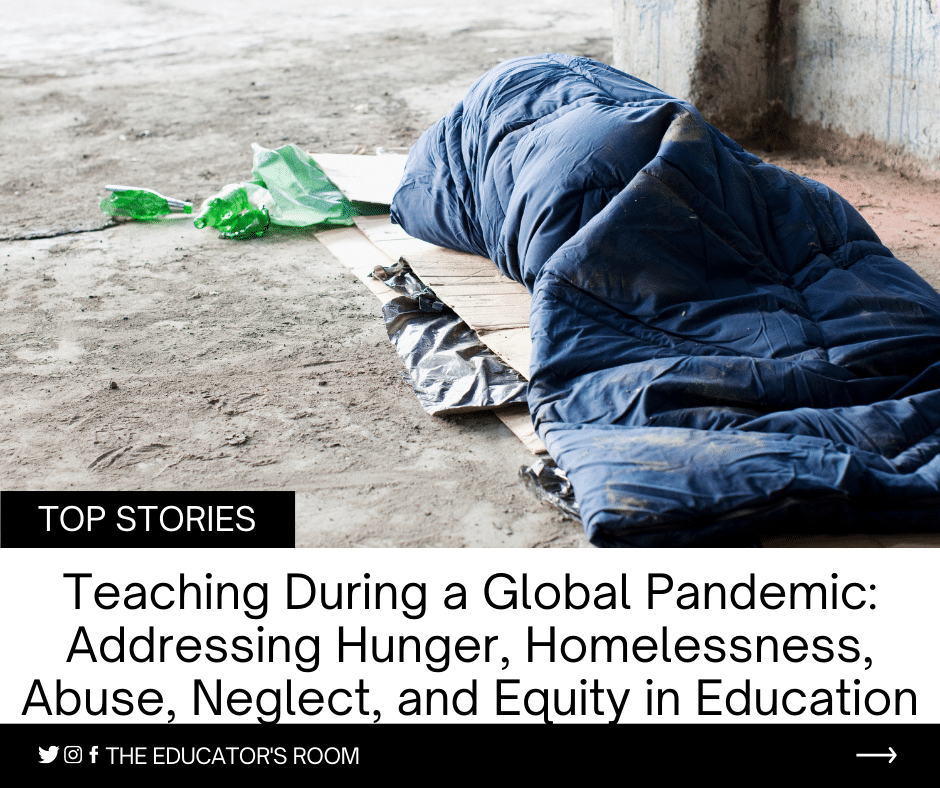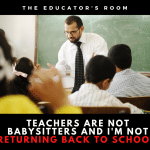Never before has education been so uncertain and inconsistent in the states. Schools have always varied in their effectiveness, equity, and opportunity in every state and every county. This year, however, every school experience will look different, and every child will struggle with different things. Pressure mounts for parents to provide their child with expensive technology, for schools to provide their students with engaging experiences and healthy meals throughout the day, and for students and teachers to work together each day to engage in learning and discussion that is enriching for every child regardless of their race, gender, orientation, ethnicity, and economic status.
Educators have always struggled with the immense pressure that accompanies teaching. We want to provide a learning experience that every student can connect with, we want to ensure our students are safe, we want to ensure our students are fed and cared for properly, and we want to ensure all students are seen and heard every day. This has become near impossible in some schools now that we are faced with a global pandemic.
Are Our Children Properly Supervised?
Many schools have gone virtual. This means that students have to log into computers to attend class each day. Often, this means students are being left with siblings or babysitters, or parents have had to leave their job to ensure they are properly educated throughout the day. This presents the student and their families with many challenges. One challenge is that abuse and neglect cases are on the rise for school-aged children. Studies show that 20% of child neglect and abuse reports are made by educators (Thomas, Anurudran, Robb, & Burke, 2020). What happens when the children are not at school for educators to see and report abuse and neglect? Cases of reported abuse have gone down, but this does not mean abuse has stopped. On the contrary, reports have plummeted, but reports of injured children in the ER has been on the rise since the lockdown began (Ingram, 2020). [bctt tweet=”Simply put, educators are the gatekeepers for their students’ well-being and safety, and we have been sent from our post.” username=””]
Not Every Child Has the Resources They Need to Learn from Home
Another challenge is that many students still do not have enough computers for every child enrolled in school. Not every county is equipped with enough technology to supply students with a computer. Also, internet access is still a luxury that many families cannot afford. Even with discounts from internet companies, internet access is a privilege that some families do not have. If a student has access to a computer and the internet, they are often asked to log in to a live class each day and activate their cameras. Without realizing it, schools ask students to invite their classmates into their homes and put their daily home lives on display. Not everyone lives in a fine 2-story home. Not everyone has two stable parents. Many children live in homes with single parents, ailing parents, aging grandparents, or parents with addiction or disabilities that make it impossible for them to help their students in their studies.
Students are at home, unable to come to school to receive meals. According to the School Nutrition Association (2020), nearly 100,000 schools/institutions serve school lunches to 29.6 million students each day, including 20.1 million free lunches and 1.7 million students at a reduced price. Many students who could benefit from free or reduced breakfast and lunch before Covid-19 are now going without meals. In addition to the worry of nutrition, many families are losing their homes from their inability to work consistently and pay rent or mortgages. An estimated 30 to 40 million people in America are at risk of eviction in the next few months (Vagianos, 2020). This will mean that millions of children will become houseless, hungry, and without having their educational needs met. This is a crisis, and it is America’s problem.
Equity in Education During the Covid-19 Crisis
Finally, equity in education has never been more problematic than it is today. Schools have always varied in their reception of funding and resources for their students. Technology, books, other resources, academic standards, and proper support and mentoring have always been wildly unequal in America (Heick, 2015). Students need to be provided with creative and flexible educators and provide academic support in this new age of technology. Students will need dedicated mentors available to meet their needs. Teachers will need to provide these supports without draining their own mental health banks in the meantime. Teachers will need more training on teaching in this technological age and more resources to provide their students with materials to support learning and growth from any environment.
Equality for BIPOC Students
This summer, our country was faced with many challenges, and this challenge was especially difficult for people of color. As racial inequality continues to divide us, many people took to the streets to march for the rights of Black and Brown people in America. Parents were worried as they thought of sending their children back into the classroom (virtual or in-person) after a summer of marching and division. Many people who have children of color in American schools are concerned about whether their child will be treated fairly, fully seen, and fully heard in schools in person or online. Will the current political climate negatively impact their child, and how can they send their precious children back to school without ensuring that they will have an education that every other child receives?
Now, more than ever, parents/guardians and teachers need to unite to bring education and support to each student in this country. Teachers need to embrace the culture built into each family of the child they teach each day. Teachers will need to provide language support for their students who speak a different language at home and reach out to these children’s parents/families to further the child’s growth and development. We have an opportunity now to build a bridge of understanding in our country with this common issue of education in a global pandemic. We can unite to educate each child and provide health, safety, and nurturing for everyone. No one is left behind.

References
Heick, T. (2015, January 21). Equity in Education: Where to Begin? Retrieved December 20, 2020, from https://www.edutopia.org/blog/equity-education-where-to-begin-terry-heick
Ingram, J. (2020, July 27). Has child abuse surged under COVID-19? Despite alarming stories from ERs, there’s no answer. Retrieved December 20, 2020, from https://www.nbcnews.com/health/kids-health/has-child-abuse-surged-under-covid-19-despite-alarming-stories-n1234713
School Meal Trends & Stats. (n.d.). Retrieved December 20, 2020, from https://schoolnutrition.org/AboutSchoolMeals/SchoolMealTrendsStats/
Thomas, E. Y., Anurudran, A., Robb, K., & Burke, T. F. (2020). Spotlight on child abuse and neglect response in the time of COVID-19. The Lancet. Public health, 5(7), e371. https://doi.org/10.1016/S2468-2667(20)30143-2
Vagianos, A. (2020, December 11). COVID-19’s Looming Eviction Crisis Will Devastate Women. Retrieved December 20, 2020, from https://www.huffpost.com/entry/covid-19-eviction-crisis-women_n_5fca8af3c5b626e08a29de11





